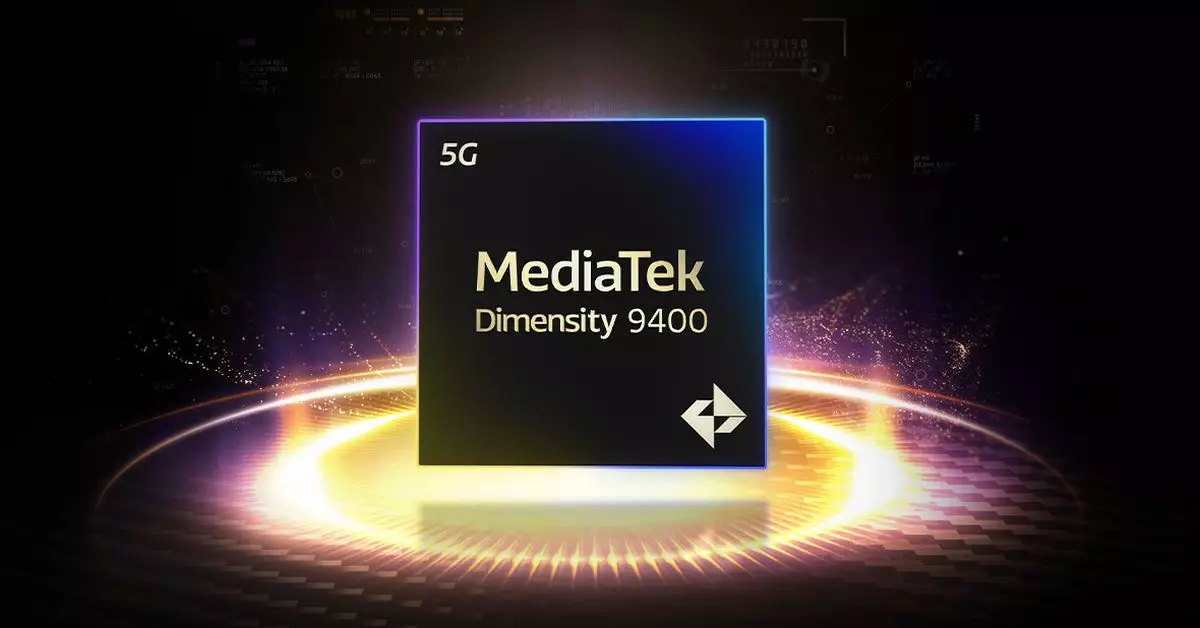MediaTek has unveiled its latest mobile chipset, the Dimensity 9400, marking a significant milestone in mobile technology. As consumer demands evolve and competition in the mobile chip market intensifies, this new chipset is poised to offer enhanced performance, efficiency, and innovative features. With a manufacturing process that shrinks down to 3nm, the Dimensity 9400 promises efficiencies that could reshape user experiences across devices.
Performance Enhancements
The Dimensity 9400 delivers impressive performance metrics, boasting a combination of one Arm Cortex-X925 core clocked at 3.62GHz, along with three Arm Cortex-X4 cores and four Cortex-A720 cores. MediaTek claims that this architecture results in a 35% increase in single-core performance and a 28% enhancement in multi-core performance when paralleled with its predecessor, the Dimensity 9300. These figures could translate to smoother multitasking and enhanced application performance, essential for today’s demanding mobile environments.
Moreover, the chipset also integrates a cutting-edge 12-core Immortalis-G925 GPU. This graphical powerhouse is designed for more than just traditional gaming, as it supports ray tracing with a capability that is 40% faster than previous iterations. Such advancements in graphical processing will significantly improve visual fidelity and overall gaming experiences, thereby catering to both casual users and hardcore gamers alike.
Innovations in AI and Future Technologies
Beyond hardware performance, the Dimensity 9400 is characterized by its advanced AI capabilities. Featuring MediaTek’s eighth-generation NPU, the chipset is designed to handle AI modeling directly on devices, enabling real-time data processing and analysis. A noteworthy feature is its reported “80% faster large language model prompt performance,” which positions it well for applications in natural language processing and smart assistant technologies.
Additionally, the chipset supports AI-driven video generation and presents a developer framework intended for creating intelligent applications. This indicates a strategic move toward embedding more smart features in everyday devices, pushing the boundaries of contextual awareness and user personalization.
One of the more intriguing aspects of the Dimensity 9400 is its readiness for tri-fold and expanded screens—formats that remain largely speculative in today’s market. MediaTek’s ability to scale content effectively for these devices could set the stage for a revolution in mobile interface design should such products gain traction among consumers.
The Dimensity 9400 is projected to make its debut in the market by Q4 of this year. Historically, MediaTek’s flagship chipsets find their way into popular smartphones produced by Chinese OEMs like Vivo and Oppo. However, its presence in markets such as the United States may be limited, where Qualcomm continues to dominate. The impact of varying regional manufacturer preferences on the chipset’s market penetration will be pivotal to its overall success.
MediaTek’s Dimensity 9400 introduces a compelling package that blends powerful performance with futuristic features. As it begins to filter into flagship smartphones, users can anticipate enhanced performance, better AI integration, and the potential for innovative display interfaces. The real test lies ahead—how will manufacturers and consumers respond to this evolution in mobile technology, and will MediaTek’s ambitions translate into widespread adoption? Only time will tell, but the groundwork has undeniably been laid for a transformative future in mobile computing.

